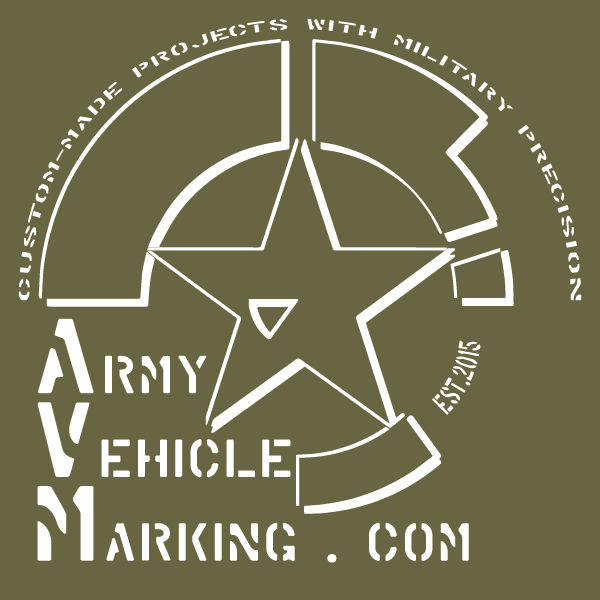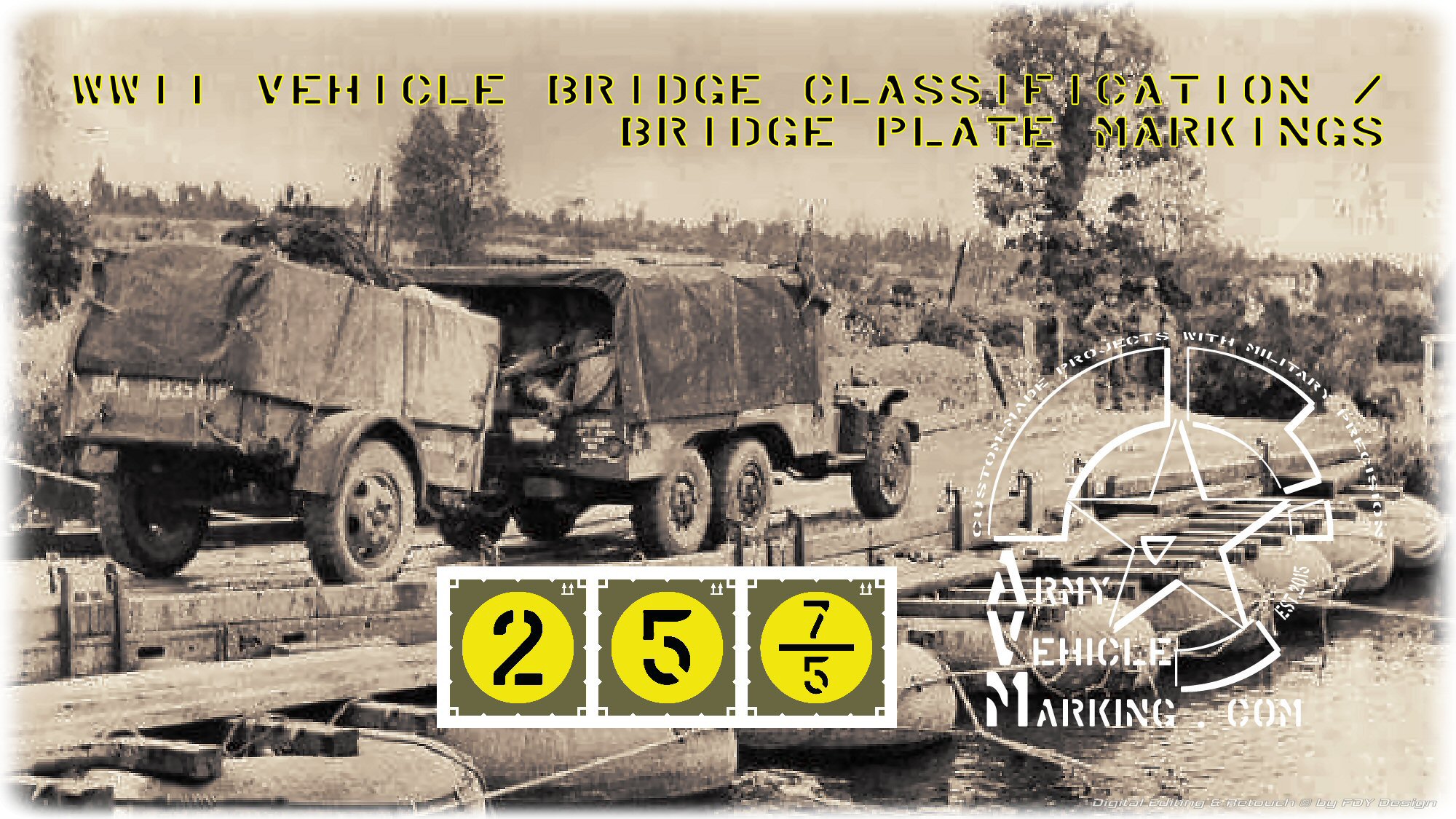Bridge Classification Signs and Plates on Allied Vehicles and Tanks during WWII
Introduction
During World War II, the effective movement of military vehicles and tanks across various bridges was a critical aspect of strategic mobility. To address concerns about potential damage to bridges from vehicles exceeding their weight capacities, the Allied forces implemented a comprehensive system of Bridge Classification Signs and Plates. This system aimed to categorize both bridges and vehicles based on their weight capacities, ensuring safe passage and minimizing the risk of structural damage. This essay explores the historical development, implementation, and significance of the Bridge Classification Signs and Plates used by the Allied forces during WWII.
Historical Background and Implementation
The origin of the Bridge Classification System can be traced back to the early stages of World War II. In the summer of 1940, the War Office recognized the increasing risk of bridge damage caused by vehicles exceeding their weight limits. To mitigate this risk, a system of classification and marking for both bridges and vehicles was adopted. The regulations in 1940 initially designated bridge classes as 5, 9, 12, 18, and 24, while by 1944, the system expanded to include classes 5, 7, 9, 12, 16, 18, 20, 24, 30, 35, 40, 50, 60, and 70.
Bridge Classification Signs
Bridge Classification Signs were instrumental in conveying crucial information about the weight capacity of a given bridge to approaching vehicles. These signs were typically discs, ranging from 6 to 9 inches in diameter, painted yellow and adorned with black numbers representing the weight class. The signs could either be metal plates attached to the vehicle or painted directly onto it. They were commonly positioned on the right front fender, and in some cases, replaced the right front headlight.
The numbering system denoted the maximum weight class of vehicles that could safely cross a specific type of bridge. These weight classifications did not necessarily reflect the actual weight in tons but were derived from factors such as axle loading, distance between axles, and impact factor. The 1943 manual “TM 5-277” provided detailed information.
Vehicle Classification and Marking
To complement the bridge classification system, Allied vehicles and tanks were classified based on their weight, and corresponding markings were applied. Each vehicle had a black numeral(s) on a yellow disc indicating its weight class, attached to or painted on the front of the vehicle. Motorcycles, classified as Class 1 vehicles, were an exception, and they did not have bridging discs.
Vehicles towing guns or trailers received double classifications. The upper number denoted the class of the complete “train” (vehicle and attached equipment), while the lower number indicated the class of the “tractor” (vehicle) alone. In cases where vehicles towed other vehicles, the classifications of both vehicles were added to determine the overall classification.
Challenges and Solutions
Implementing and maintaining this classification system posed challenges in the field. The visibility of the classification signs was crucial, and efforts were made to ensure they remained visible even when vehicles were camouflaged. Canadian Army Training Memorandum No. 22, published in January 1943, emphasized the importance of covering these signs to prevent them from attracting unnecessary attention.
Vehicle Types and Classifications
Military Training Pamphlet 74 Part IV, published in May 1944, listed various vehicle types and their corresponding bridge classifications. This information provided a comprehensive overview of the diverse fleet of military vehicles and tanks used during WWII, helping commanders make informed decisions regarding bridge crossings.
Conclusion
he WWII Allied Bridge Classification Signs and Plates played a crucial role in ensuring the safe passage of military vehicles and tanks across bridges. This systematic approach to bridge and vehicle classification helped minimize the risk of structural damage and contributed to the overall efficiency of Allied military operations. The implementation of this classification system, as detailed in historical documents such as 1943 “TM 5-277,” underscored the meticulous planning and attention to detail that characterized Allied military strategies during World War II.
Military Training Pamphlet 74 Part IV published in May 1944 and the U.S. 1943 “TM 5-277” listed the following vehicle types and their bridge classifications (the list is also useful for providing a look at vehicle designations as the army of the time used them):
TM 5-277 (1943) Our own historical research
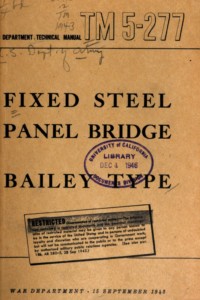 |
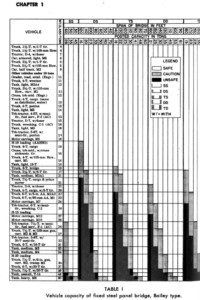 |
Bridge Classification – U.S. Army – Vehicles, Trailers and Tanks (1943)
| Class | Type | Category | Class |
| 1 | Motorcycle | Motorcycle | 1 |
| 1 | Trailer, small 1/4 ton, 2-wheel, (TM 10-1281 & TM 10-1230) for Jeep 4×4 Willys / Ford |
Trailer | 1 |
| 2 | Trailer, medium 1 ton, 2-wheel (Ben Hur), (TM 9-883) for like Dodge / GMC |
Trailer | 2 |
| 2 | Truck 1/4 ton, Jeep / Reconnaissance truck | Truck | 2 |
| 2 | Truck 1/4 ton, Jeep 4×4 Willys / Ford | Truck | 2 |
| 3 over 2 | Truck 1/4 ton, Jeep 4×4 Willys / Ford, w/trailer small |
Truck + Trailer | 3 over 2 |
| 3 | Trailer, heavy M10 Ammo, 2-wheel, (TM 9-333) | Trailer | 3 |
| 3 | Truck 1/2 ton, Dodge VC-series, no trailer |
Truck | 3 |
| 4 | Ambulance, 3/4 ton | Truck | 4 |
| 4 | Truck 3/4 ton, Dodge 4×4 WC-series, (TM 9-808) no trailer |
Truck | 4 |
| 4 | Truck Light | Truck | 4 |
| 6 over 4 | Truck 3/4 ton, Dodge 4×4 WC-series, (TM 9-808) w/trailer (Ben Hur) |
Truck + Trailer | 6 over 4 |
| 5 | Truck 1-1/2 ton | Truck | 5 |
| 5 | Truck 1-1/2 ton, Dodge 6×6 WC62-63, (TM 9-810) no trailer |
Truck | 5 |
| 5 | Truck 1-1/2 ton, Dodge VF-series, no trailer |
Truck | 5 |
| 7 over 5 | Truck 1-1/2 ton, Dodge 6×6 WC62-63, (TM 9-810) w/trailer (Ben Hur) |
Truck + Trailer | 7 over 5 |
| 6 | Truck 1-1/2 ton, w/105-mm How | Truck + How | 6 |
| 7 | Armored Car M8 | Armored Car | 7 |
| 10 | Half-Track like M3 | Armored Car | 10 |
| 10 | Truck 2-1/2 to 5 ton | Truck | 10 |
| 15 | Tank, Stuart | Tank | 15 |
| 16 | Tank, destroyer Hellcat | Tank | 16 |
| 21 | Trucks over 5 ton | Truck | 21 |
| 30 | Tank, Sherman | Tank | 30 |
| 34 | Tank, Pershing | Tank | 34 |
| 6 or 7 | Truck 1-1/2 ton, w/1-ton trailer (*)class 6 or 7, depending manuals & photo’s |
Truck + Trailer | 6 or 7 |
| 7 | Tractor, D-4, w/dozer | Tractor | 7 |
| 8 | Car, armored light M8 | Armored Car | 8 |
| 9 | Car, half track M2 | Armored Car | 9 |
| 9 | Truck 2-1/2 ton, w/105-mm How. | Truck + How | 9 |
| 9 | Truck 2-1/2 ton, w/1 ton trailer | Truck + Trailer | 9 |
| 11 | Grader, road mtzd. (Engr.) | Grader | 11 |
| 11 | Truck 4 ton wrecker | Truck | 11 |
| 11 | Truck 2-1/2 ton, w/155-mm How. Carr. M1 | Truck + How | 11 |
| 12 | Crane trk-mtd. (Engr.) | Crane | 12 |
| 12 | Tank, light M2A4 | Tank | 12 |
| 12 | Trk-tractor, 4-5T w/semi-trailer fuel serv. F-2 | Truck-tractor + Trailer | 12 |
| 13 | Truck, 4 ton cargo (same as distributor water) | Truck | 13 |
| 13 | Truck, 4 ton ponton | Truck | 13 |
| 14 | Tank, light M3 | Tank | 14 |
| 14 | Trk-tractor, 5-6T w/semi-trailer ponton | Truck-tractor + Trailer | 14 |
| 15 | Crane trk-mtd., w/crane atchmnts. trailer | Crane H-10 loading (AASHO) |
15 |
| 15 | Tractor, D-7 w/dozer | Tractor | 15 |
| 16 | Motor carriage, M8 | Motor Carriage | 16 |
| 16 | Tank, light M5 | Tank | 16 |
| 16 | Truck, wrecking C-1 (AC) | Truck | 16 |
| 16 | Truck, 4 ton, w/155-mm How., carr. M1 | Truck + How H-10 loading (AASHO) |
16 |
| 17 | Truck, 2-1/2 ton, w/8 ton trailer | Truck + Trailer H-10 loading (AASHO) |
17 |
| 18 | Tank, light 18 ton | Truck H-10 loading (AASHO) |
18 |
| 18 | Truck, 6 ton, cargo | Truck H-10 loading (AASHO) |
18 |
| 19 | Truck, 6 ton, bridge | Truck H-10 loading (AASHO) |
19 |
| 20 | Truck, 4 ton. cargo. w/8 ton trailer | Truck + Trailer H-10 loading (AASHO) |
20 |
| 21 | Tank, medium M2A1 | Tank H-10 loading (AASHO) |
21 |
| 21 | Truck, 7-1/2 ton, cargo & prime mover | Truck H-10 loading (AASHO) |
21 |
| 22 | Tractor, D-8, w/dozer | Tractor H-10 loading (AASHO) |
22 |
| 22 | Truck, 6 ton, w/3-in. AA M2A2 | Truck H-10 loading (AASHO) |
22 |
| 23 | Truck, 6 ton, w/90-mm AA M1 | Truck H-10 loading (AASHO) |
23 |
| 24 | Motor carriage, M7 | Motor Carriage H-10 loading (AASHO) |
24 |
| 26 | Trk-tractor, 6 ton, w/semi-trailer wrecking C-2 | Truck-tractor + Trailer H-10 loading (AASHO) |
26 |
| 26 | Trk-tractor, 7-1/2 ton, w/semi-trailer fuel serv. F-1 (AC) | Truck-tractor + Trailer H-15 loading |
26 |
| 27 | Motor carriage, M12 | Motor Carriage H-15 loading |
27 |
| 28 | Truck, 7-1/2 ton, w/155-mm gun carr. M2 & M3 | Truck H-15 loading |
28 |
| 29 | Motor carriage, M10 | Motor Carriage H-15 loading |
29 |
| 31 | Truck, 6 ton, w/16 ton trailer | Truck + Trailer H-15 loading |
31 |
| 32 | Trk-tractor, 5-6 ton, w/20 ton semi-trailer | Truck-tractor + Trailer H-15 loading |
32 |
| 33 | Tank, medium, M3 | Tank H-15 loading |
33 |
| 34 | Tank, medium, M4 | Tank H-15 loading |
34 |
| 34 | Truck, 7-1/2 ton w/8-in. Gun carr. M2 transp M1 | Truck H-20 loading |
34 |
| 37 | Truck, 6 ton, w/20 ton trailer | Truck + Trailer H-20 loading |
37 |
| 39 | Truck, 7-1/2 ton, w/20 ton trailer | Truck + Trailer H-20 loading |
39 |
| 46 | Tank, assault, T-14 | Tank H-20 loading |
46 |
| 60 | Tank, heavy, M6 | Tank H-20 loading |
60 |
TM 5-277 (1948) Our own historical research
 |
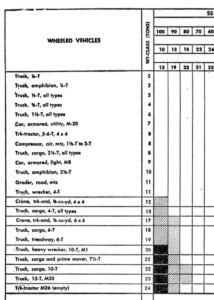 |
 |
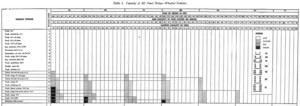 |
Source info & some other interesting links for extra research:
– Our own historical research and collection by “Army Vehicle Marking . com”
– 1943 & 1948 manuals “TM 5-277”
– U.S. Army Vehicle Markings by Jean Bouchery & Philippe Charbonnier
– www . canadiansoldiers . com
– www . wartimecanada . ca
– www . mapleleafup . net
– forums . g503 . com
– www . wikipedia . org
Index: Brasil, Brazil, Bridge Class, Bridge Classification, Bridge Classification Signs, Bridge Plate, FAB, FEB, Holland, Mexico, Netherlands, Philippines, The Netherlands, U.S., U.S. Airforce, U.S. Army, U.S. Navy, U.S.A, U.S.A.A.F., U.S.A.F.
